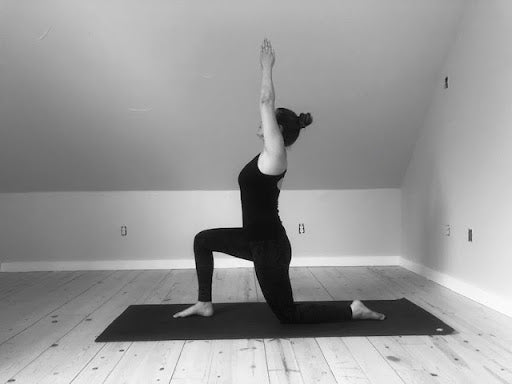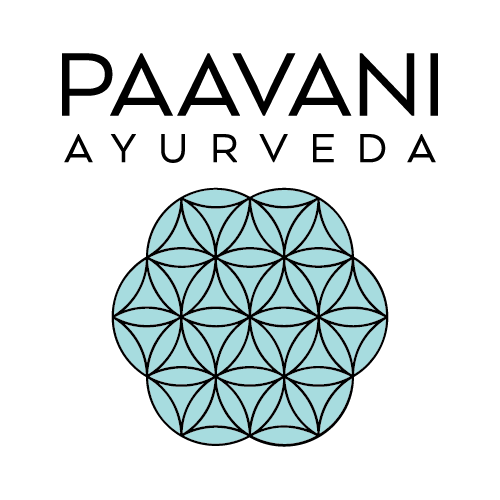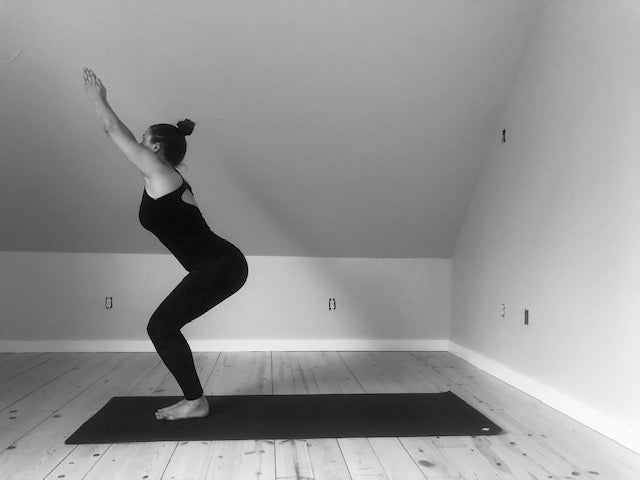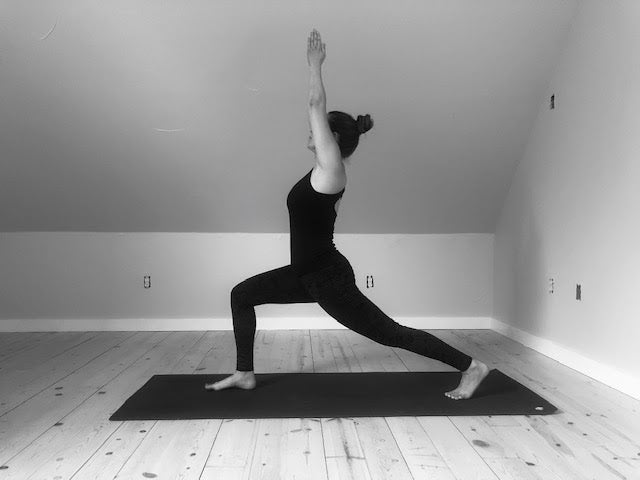
Anjaneyasana: An Ayurvedic Guide to Crescent Lunge

The Yoga posture, Anjaneyasana, is named after a baby named Anjaneya. Anjaneya was born to a beautiful woman, Anjana, and the wind god, Vayu. Anjana desired to become a mother and Lord Vayu heard this prayer. The story goes that Lord Vayu blessed a few grains of rice and sent them in the wind into the hands of Anjana. When Anjana felt the rice in her hands, she ate them and became pregnant. Anjaneya was born and was half mortal and half divine. Being half divine, Anjaneya was able to soar into the sky and one day, he mistakenly tried to take a bite out of the sun, which he had mistaken for a mango! This made the sun god, Surya, very upset and he struck Anjaneya down with a lightning bolt, hitting him in the jaw and killing Anjaneya instantly.
When Vayu heard what had happened to his son, he was so furious that he sucked up all the air in the universe and people were unable to breathe. Due to this, an emergency meeting was held among the gods to try to restore order and peace back into the mortal and divine worlds. Vayu would not exhale all the air he had sucked in until he got his son, Anjaneya back; however, Surya was concerned that the child was a danger to the world because of his precocious nature and godlike powers.
An agreement was made that Anjaneya would be renamed Hanuman and brought back to life on the exception that he would have short term memory and not be able to remember his divinity, or godliness, long enough to cause harm. Also, Hanuman would be removed from his mother’s care and would live with the respected monkey king, Sugriva. The little boy would also take the appearance of a monkey in order to blend in with his new family.
This is the story of Anjaneyasana or Crescent Lunge posture. This posture helps us, like Anjaneya, stretch and test the limits. Yet, instead of testing the limits by soaring into the sky, we are simply testing the limits of our physical body, namely testing and experiencing the state of our psoas muscle. The psoas is a thick, rope like muscle which is located at the lower lumbar region of the spine and moves through the pelvis and attaches to the front of the body. The psoas muscle allows you to bend your hips and raise your knees up to your chest; thus, it is responsible for movements like walking, sitting and running. These repetitive movements can shorten and thicken the already thick psoas muscle and can lead to low back pain, tight hips, sciatica and lumbar disc problems. Therefore, it is beneficial to incorporate yoga postures which stretch and release the psoas and Anjaneyasana, or Crescent Lunge, is a wonderful posture to do just that. Crescent Lunge is also helpful in opening the heart center. This helps to release any excess kapha which can settle into the chest. Anjaneyasana is beneficial for vata, pitta and kapha doshas.
How to Do Anjaneyasana:
- From Downward Facing Dog, inhale and step the right foot forward with the right knee directly over the right ankle and simultaneously lower the left knee to the floor.
- Once rooted through the lower body, take an inhale and sweep the arms up and overhead and allow the gaze to be upward and look at the hands.
How to Do Anjaneyasana, Heart Opening Variation:

- From Anjaneyasana, exhale and interlace the hands behind the back.
- Squeeze the heels of the hands together and begin to expand and open the heart center with an inhale.
- When opening through the heart center, avoid flaring the front ribs and putting strain in the low back. Instead, knit the front ribs in and down and draw the navel towards the spine. This will give you the benefits of a heart opener without compromising the integrity of the spine.
- Release the hands from behind the back and plant the hands to the floor.
- Step back to Downward Facing Dog.
- Repeat this series on the opposite side.
Precautions:
Contraindications for Anjaneyasana:
-heart problems
Works Cited:
Kaivalya, Alanna and van der Kooij, Arjuna. Myths of the Asanas: The Stories at the Heart of the Yoga Tradition. San Rafael, CA: Mandala Publishing, 2010.





Leave a comment
This site is protected by hCaptcha and the hCaptcha Privacy Policy and Terms of Service apply.